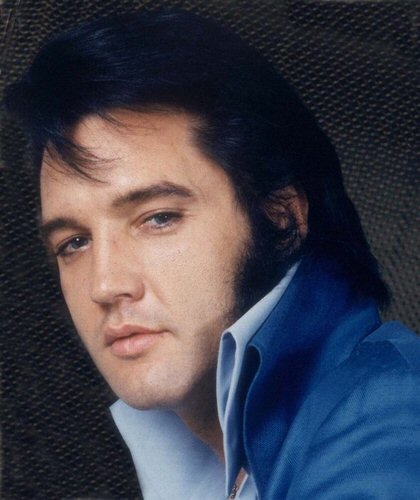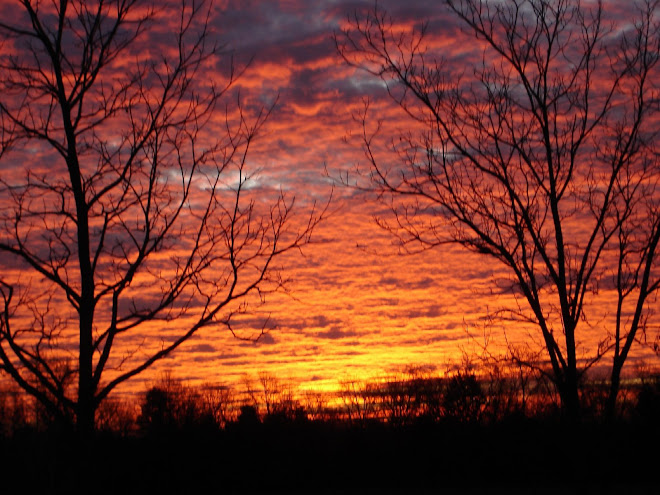



Memorial Day is a United States federal holiday observed on the last Monday of May (on May 25 in 2009). Formerly known as Decoration Day, it commemorates U.S. men and women who died while in the military service. First enacted to honor Union soldiers of the American Civil War (it is celebrated near the day of reunification after the civil war), it was expanded after World War I to include American casualties of any war or military action.
Traditional Observance
Many people observe this holiday by visiting cemeteries and memorials. A national moment of remembrance takes place at 3 p.m. Eastern Time. Another tradition is to fly the flag of the United States at half-staff from dawn until noon local time. Volunteers often place American flags on each gravesite at National Cemeteries. Many Americans also use Memorial Day to honor other family members who have died.
Members of the Veterans of Foreign Wars take donations[2] for poppies in the days leading up to Memorial Day; the poppy's significance to Memorial Day is the result of the John McCrae poem "In Flanders Fields."
In addition to remembrance, Memorial Day is also used as a time for picnics, barbecues, family gatherings, and sporting events. One of the longest-standing traditions is the running of the Indianapolis 500, which has been held in conjunction with Memorial Day since 1911.
Some Americans view Memorial Day as the unofficial beginning of summer and Labor Day as the unofficial end of the season. The national "Click It or Ticket" campaign ramps up beginning Memorial Day weekend, noting the beginning of the most dangerous season for car accidents and other safety-related incidents. The United States Air Force's "101 Critical Days of Summer," marking the period that statistically has shown an increase in accidents, begin on this day as well.
Memorial Day formerly was observed on May 30. The Veterans of Foreign Wars (VFW) and Sons of Union Veterans of the Civil War (SUVCW) advocate returning to this fixed date, although the significance of the date is tenuous. The VFW stated in a 2002 Memorial Day Address:
“ Changing the date merely to create three-day weekends has undermined the very meaning of the day. No doubt, this has contributed a lot to the general public's nonchalant observance of Memorial Day. ”
Since 1987, Hawaii's Senator Daniel Inouye, a World War II veteran, has repeatedly introduced measures to return Memorial Day to its traditional date.
Many people observe this holiday by visiting cemeteries and memorials. A national moment of remembrance takes place at 3 p.m. Eastern Time. Another tradition is to fly the flag of the United States at half-staff from dawn until noon local time. Volunteers often place American flags on each gravesite at National Cemeteries. Many Americans also use Memorial Day to honor other family members who have died.
Members of the Veterans of Foreign Wars take donations[2] for poppies in the days leading up to Memorial Day; the poppy's significance to Memorial Day is the result of the John McCrae poem "In Flanders Fields."
In addition to remembrance, Memorial Day is also used as a time for picnics, barbecues, family gatherings, and sporting events. One of the longest-standing traditions is the running of the Indianapolis 500, which has been held in conjunction with Memorial Day since 1911.
Some Americans view Memorial Day as the unofficial beginning of summer and Labor Day as the unofficial end of the season. The national "Click It or Ticket" campaign ramps up beginning Memorial Day weekend, noting the beginning of the most dangerous season for car accidents and other safety-related incidents. The United States Air Force's "101 Critical Days of Summer," marking the period that statistically has shown an increase in accidents, begin on this day as well.
Memorial Day formerly was observed on May 30. The Veterans of Foreign Wars (VFW) and Sons of Union Veterans of the Civil War (SUVCW) advocate returning to this fixed date, although the significance of the date is tenuous. The VFW stated in a 2002 Memorial Day Address:
“ Changing the date merely to create three-day weekends has undermined the very meaning of the day. No doubt, this has contributed a lot to the general public's nonchalant observance of Memorial Day. ”
Since 1987, Hawaii's Senator Daniel Inouye, a World War II veteran, has repeatedly introduced measures to return Memorial Day to its traditional date.
History
Following the end of the Civil War, many communities set aside a day to mark the end of the war or as a memorial to those who had died. Some of the places creating an early memorial day include Sharpsburg, Maryland, located near Antietam Battlefield; Charleston, South Carolina; Boalsburg, Pennsylvania; Richmond, Virginia; Carbondale, Illinois; Columbus, Mississippi; many communities in Vermont; and some two dozen other cities and towns. These observances coalesced around Decoration Day, honoring the Union dead, and the several Confederate Memorial Days.
According to Professor David Blight of the Yale University History Department, the first memorial day was observed in 1865 by liberated slaves at the historic race track in Charleston. The site was a former Confederate prison camp as well as a mass grave for Union soldiers who died in captivity. The freed slaves re interred the dead Union soldiers from the mass grave to individual graves, fenced in the graveyard and built an entry arch declaring it a Union graveyard. This was a daring action for them to take in the South shortly after the North's victory. On May 30, 1868, the freed slaves returned to the graveyard with flowers they had picked from the countryside and decorated the individual gravesites, thereby creating the first Decoration Day. A parade by thousands of freed blacks and Union soldiers from the area was followed by patriotic singing and a picnic.
Following the end of the Civil War, many communities set aside a day to mark the end of the war or as a memorial to those who had died. Some of the places creating an early memorial day include Sharpsburg, Maryland, located near Antietam Battlefield; Charleston, South Carolina; Boalsburg, Pennsylvania; Richmond, Virginia; Carbondale, Illinois; Columbus, Mississippi; many communities in Vermont; and some two dozen other cities and towns. These observances coalesced around Decoration Day, honoring the Union dead, and the several Confederate Memorial Days.
According to Professor David Blight of the Yale University History Department, the first memorial day was observed in 1865 by liberated slaves at the historic race track in Charleston. The site was a former Confederate prison camp as well as a mass grave for Union soldiers who died in captivity. The freed slaves re interred the dead Union soldiers from the mass grave to individual graves, fenced in the graveyard and built an entry arch declaring it a Union graveyard. This was a daring action for them to take in the South shortly after the North's victory. On May 30, 1868, the freed slaves returned to the graveyard with flowers they had picked from the countryside and decorated the individual gravesites, thereby creating the first Decoration Day. A parade by thousands of freed blacks and Union soldiers from the area was followed by patriotic singing and a picnic.
The official birthplace of Memorial Day is Waterloo, New York. The village was credited with being the place of origin because it observed the day on May 5, 1866, and each year thereafter. The friendship between General John Murray, a distinguished citizen of Waterloo, and General John A. Logan, who helped bring attention to the event nationwide, likely was a factor in the holiday's growth.
Logan had been the principal speaker in a citywide memorial observation on April 29, 1866, at a cemetery in Carbondale, Illinois, an event that likely gave him the idea to make it a national holiday. On May 5, 1868, in his capacity as commander-in-chief of the Grand Army of the Republic, a veterans' organization, Logan issued a proclamation that "Decoration Day" be observed nationwide. It was observed for the first time on May 30 of the same year; the date was chosen because it was not the anniversary of a battle. The tombs of fallen Union soldiers were decorated in remembrance.
Many of the states of the U.S. South refused to celebrate Decoration Day, due to lingering hostility towards the Union Army and also because there were relatively few veterans of the Union Army who were buried in the South. A notable exception was Columbus, Mississippi, which on April 25, 1866 at its Decoration Day commemorated both the Union and Confederate casualties buried in its cemetery.
The alternative name of "Memorial Day" was first used in 1882. It did not become more common until after World War II, and was not declared the official name by Federal law until 1967. On June 28, 1968, the United States Congress passed the Uniform Holidays Bill, which moved three holidays from their traditional dates to a specified Monday in order to create a convenient three-day weekend. The holidays included Washington's Birthday, now celebrated as Presidents' Day; Veterans Day, and Memorial Day. The change moved Memorial Day from its traditional May 30 date to the last Monday in May. The law took effect at the federal level in 1971.
After some initial confusion and unwillingness to comply, all fifty states adopted the measure within a few years. Veterans Day was eventually changed back to its traditional date. Ironically, most corporate businesses no longer close on Veterans Day, Columbus Day, or President's Day, with the day after Thanksgiving, Christmas Eve, and/or New Year's Eve often substituted as more convenient "holidays" for their employees. Memorial Day endures as a holiday which most businesses observe because it marks the beginning of the "summer vacation season." This role is filled in neighboring Canada by Victoria Day, which occurs either on May 24 or the last Monday before that date, placing it exactly one week before Memorial Day.
Waterloo's designation as the birthplace took place just in time for the village's centennial observance. The U.S. House of Representatives and the Senate unanimously passed House Concurrent Resolution 587 on May 17 and May 19, 1966 respectively, which reads in part as follows: "Resolved that the Congress of the United States, in recognition of the patriotic tradition set in motion one hundred years ago in the Village of Waterloo, NY, does hereby officially recognize Waterloo, New York as the birthplace of Memorial Day..."
On May 26, 1966, President Lyndon B. Johnson signed a Presidential Proclamation recognizing Waterloo as the Birthplace of Memorial Day





%5B1%5D.jpg)







